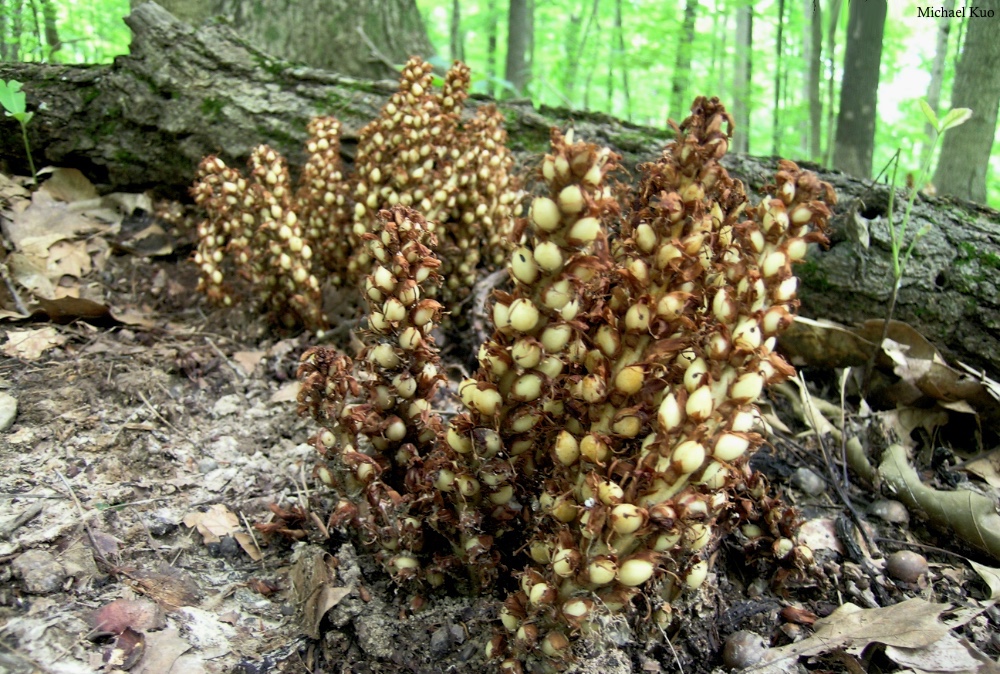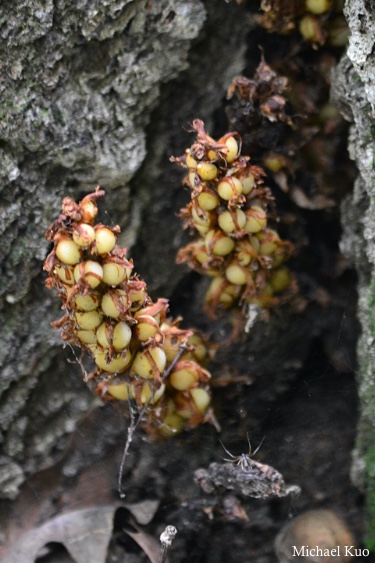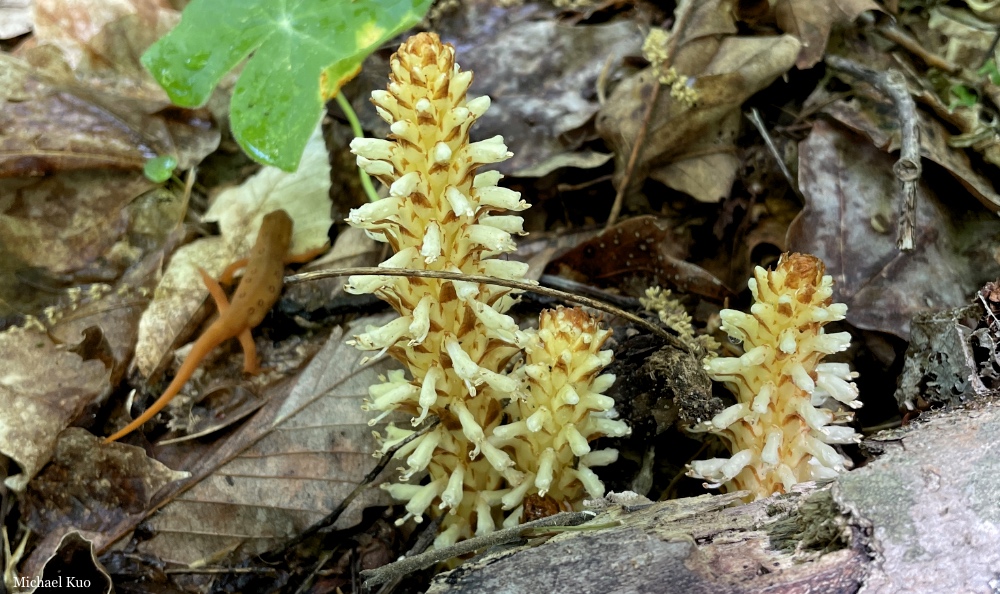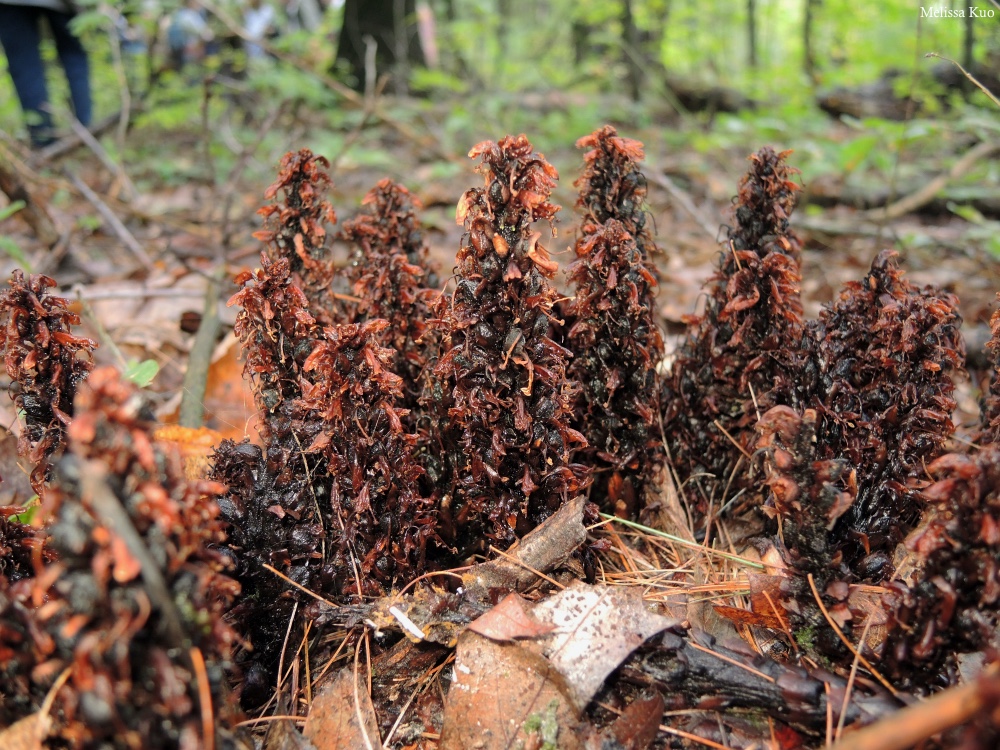 Conopholis americana (cancer root) |
|
At our companion site, MushroomExpert.Com, we get regular "what's this mushroom?" emails asking about Conopholis americana. But cancer root is not a fungus; rather, it is an achlorophyllous plant—meaning that it does not produce chlorophyll and therefore has no green colors. The plant is a parasite on oak trees, and lives underground for several years in the form of knobs attached to the tree's roots; then, in the fourth spring (or thereabouts), it sends up a flowering structure to attract pollinators and reproduce. Thereafter the plant is perennial, lasting about a decade. The plants are fairly tough, persisting each year as brown to black spikes into the summer and, sometimes, the fall. In Mexico, Texas, and the southwestern states, Conopholis americana is replaced by Conopholis alipna, which is very similar in appearance. |
 midwestern range |
|
|
|
|
|
|
|
|
|
|
|
References: GN Jones 1971, RL Jones 2005, Voss & Reznicek 2012, Mohlenbrock 2014, Ackerfield 2015, Hilty 2020, USDA 2020. Kuo, Michael & Melissa Kuo (May, 2022). Conopholis americana (cancer root). Retrieved from the midwestnaturalist.com website: www.midwestnaturalist.com/conopholis_americana.html All text and images © , midwestnaturalist.com. |




